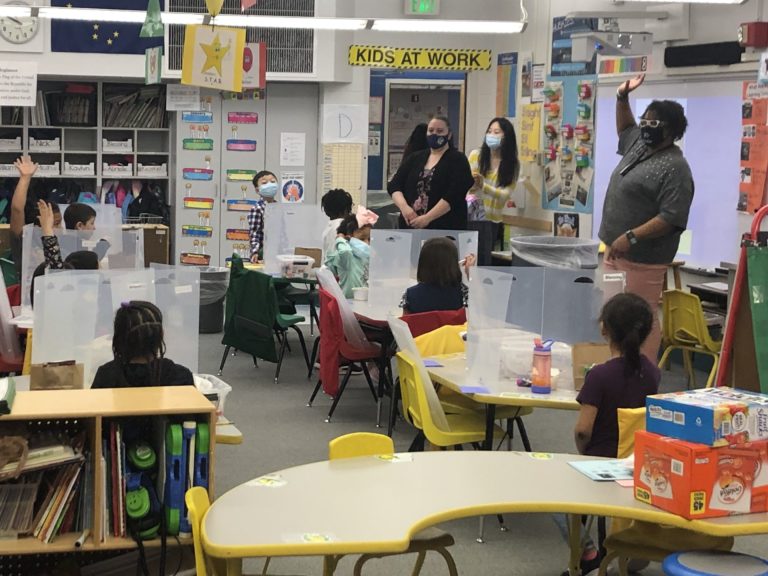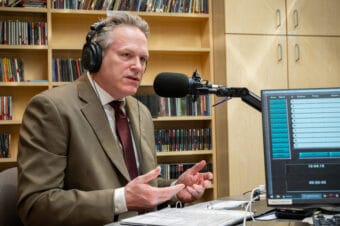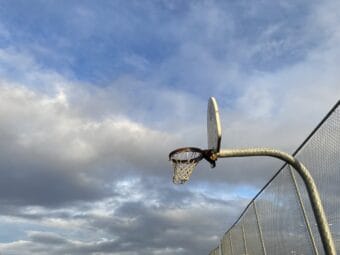
Alaska schools have already received over $246 million from two rounds of federal pandemic relief funds. The initial CARES Act passed in March 2020, and a second major stimulus, the Coronavirus Response and Relief Supplemental Appropriations (CRRSA) Act, passed last December.
Now, even more money is on the way.
On Wednesday, the U.S. Department of Education announced each state’s allocation of funds from the latest round of stimulus — the massive American Rescue Plan, passed by Congress earlier in the month. Nearly $359 million will go to Alaska elementary and secondary schools.
Education is the one of the largest portions of Alaska’s budget, and while the state usually spends more than a billion dollars each year on education, this latest infusion of cash is a significant boost. It brings the amount of federal aid provided to Alaska schools during the pandemic to over half a billion dollars.
Additionally, the U.S. Department of Health and Human Services announced funds will be made available to schools specifically for increasing COVID-19 testing. Alaska will receive around $22 million.
Here’s roughly what has been allocated from each of the packages for Alaska schools so far.
K-12 Education: $556.8 million
The federal government sent money from each aid package to the Alaska Department of Education for allocation to individual school districts for K-12 education.
- CARES: $38.4 million
- CRRSA: $159.7 million
- American Rescue Plan: $358.7 million
A list of how the first two rounds of funds were distributed by district can be found here. Allocation of the American Rescue Plan has not yet been announced.
Governor’s Emergency Education Relief Fund (GEERF): $14.7 million
The first two aid packages included funding for governors to spend on education issues at their discretion. There doesn’t appear to be GEERF money in the most recent package.
Governor Mike Dunleavy spent $6.5 million in CARES Act money on:
- $3.7 million in grants to school 35 school districts
- $1.5 million to University of Alaska
- $1 million for a competitive grant for education related entities
- $200,000 Alaska Native Science and Engineering Program
Governor Dunleavy has not yet spent the $8.2 million allocated to Alaska through CRRSAA. The bill included a provision to send relief money to private schools, of which Alaska’s portion is $5.4 million. Private schools can apply for the money on a voluntary basis through the state education department.
Dunleavy did use part of his first round of GEERF funding to create a competitive grant that education-related entities could apply for. Administrators with the state’s education department said 15 entities were awarded grants but none were private schools.
How will this help Alaska schools?
Alaska’s schools were in dire budget conditions prior to the pandemic. As it wore on, administrators implored the state government to create work-arounds to address the costs of virtual learning, the implementation of health and safety protocols, and fluctuations in enrollment.
Heidi Teshner, the finance director for the state education department said 32 of the state’s 54 school districts triggered what’s called the “hold harmless” provision, which occurs when a district experiences an enrollment loss of 5% or more in one year.
But even with additional aid, education officials are cautious, focused on using the money strategically to avoid falling off a fiscal cliff. After all, this isn’t long term funding.
Lacey Sanders, administrative services director at the Alaska Department of Education, said they’re encouraging districts to limit their spending to needs related to the pandemic such as PPE or reading materials.
“Maybe don’t bring on 50 people that you’re going to have to have salaries for in the long term,” Sanders said.
And there are timing requirements. Elementary and secondary schools must spend CARES funds by Sept. 30, 2022. Funding from the second and third relief bills must be spent by Sept. 30, 2023.
The new federal relief plan also states at least 20% of the funding must be used to address learning loss.
“This is the first time we’ve seen the federal law outline a chunk of how the school districts actually have to spend that money,” Sanders said, though details on the funds’ rules and restrictions are still being explored.
Jim Anderson, chief financial officer for the Anchorage School District, said the federal funds the district received have been used to retain teachers, provide devices and internet to students, and purchase PPE. ASD received over $62 million dollars from the first two federal aid packages, and is waiting to see what its share of the most recent package will be.
It was the first time in five years that the district didn’t have to increase class sizes, sustained pre-K programs, and avoided significant cuts to staff and programs across the board, Anderson said.
However, prior to the allocation of relief funds, the district was anticipating a $28 million shortfall. That shortfall doesn’t go away because the district received temporary federal dollars, Anderson said.
“That $28 million deficit was real. It’s like kicking a snowball down a hill, and it keeps getting bigger. But it’s still invisible to most people, because the federal money makes it look like we’re doing fine,” he said.
The school district continues to advocate for changes to the state’s base student allocation funding formula, which doesn’t increase with inflation even as the district’s expenses do. It’s a major contributor to the district’s ongoing budgeting problems.
“I can tell you that the state legislators that I’ve talked to are all aware that federal money only hides what is a structural revenue problem with K-12,” Anderson said.
But Anderson acknowledges the federal funds provide some “breathing room” for legislators, giving them time to sort out other issues before having to address the structural problems in education funding.
Anderson said it may not be explicit, but lawmakers’ overall feelings about the federal funding are obvious.
“This general sense of comfort, that they can focus on a lot of other priorities,” Anderson said. “If you were to call the municipality or anyone else at the boroughs, they’re also feeling the same sense of relief.”
Higher Education
Higher education funds from the American Rescue Plan have not been announced yet, but the University of Alaska estimates the amount they’ll receive will be close to $40 million. Money allocated to the University comes directly from the federal government.
Here’s what’s been allocated so far:
University of Alaska – $73 million
| CARES | CRRSA | ARPA (estimated) | |
| UAS | $734,000 | $1.8 million | $3 million |
| UAF | $4.1 million | $8.7 million | $15 million |
| UAA | $5.7 million | $12.1 million | $21.8 million |
| Total | $10.5 million | $22.6 million | $40 million |
Pat Pitney, interim president of the University of Alaska, said the initial rounds of funding were sorely needed, and much of it has already been spent, making up for revenue losses and COVID-19 impacts such as retrofitting labs with plexiglass and purchasing PPE as well as providing direct student aid. Pitney said she expects those budget expenses to continue.
“We won’t end this crisis even on COVID impact. But we’ll certainly be better off than we thought we could have been.”
But Pitney is mindful of the University’s financial situation beyond COVID.
“The state budget reductions had even a more significant impact on enrollment than did COVID,” Pitney said.
State lawmakers have decreased funding for the university by 30% since 2018. Pitney said they’ve had to lay off around 2500 employees to adjust to that decrease. Regents also cut programs, and proposed campus mergers as well as well cutting some sports teams.
Pitney said the University is prioritizing supporting the institution’s most popular programs and providing graduates to support Alaska industries.
“We’re actively managing to work into this new shoe size,” Pitney said.



